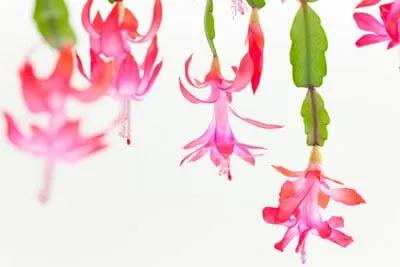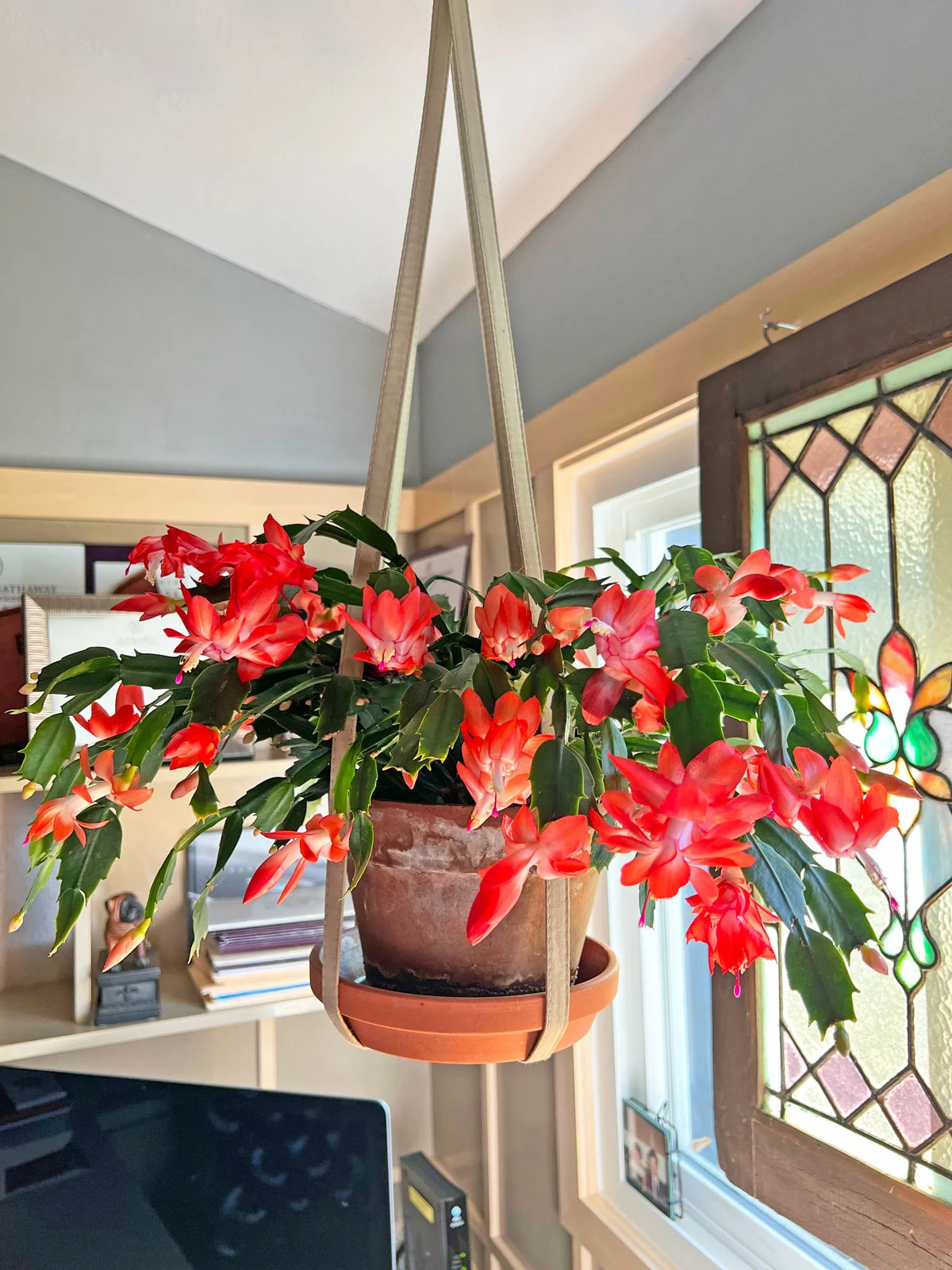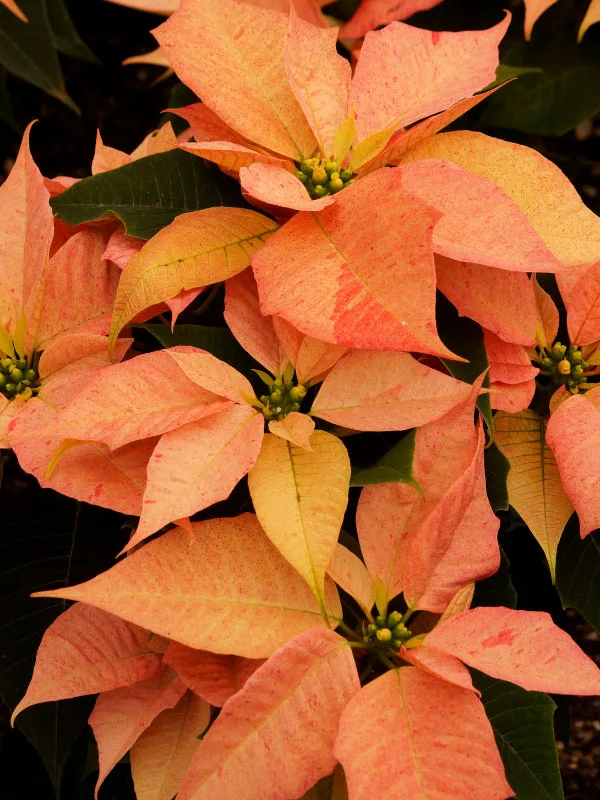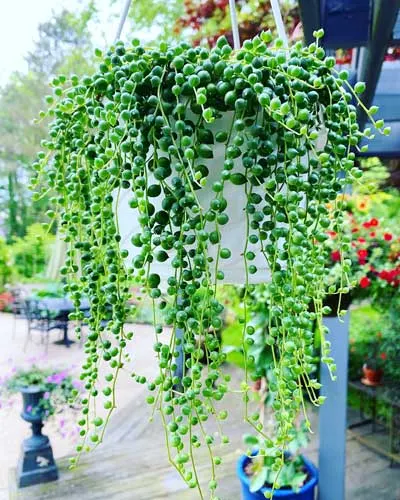Some of the links in this post may be affiliate links.
Are you wondering why your Christmas Cactus is turning purple? There are actually many reasons why holiday cacti (including Christmas cacti and thanksgiving cacti) turn purple. The good part is that it can be reversed in many cases, and isn’t always cause for severe alarm.
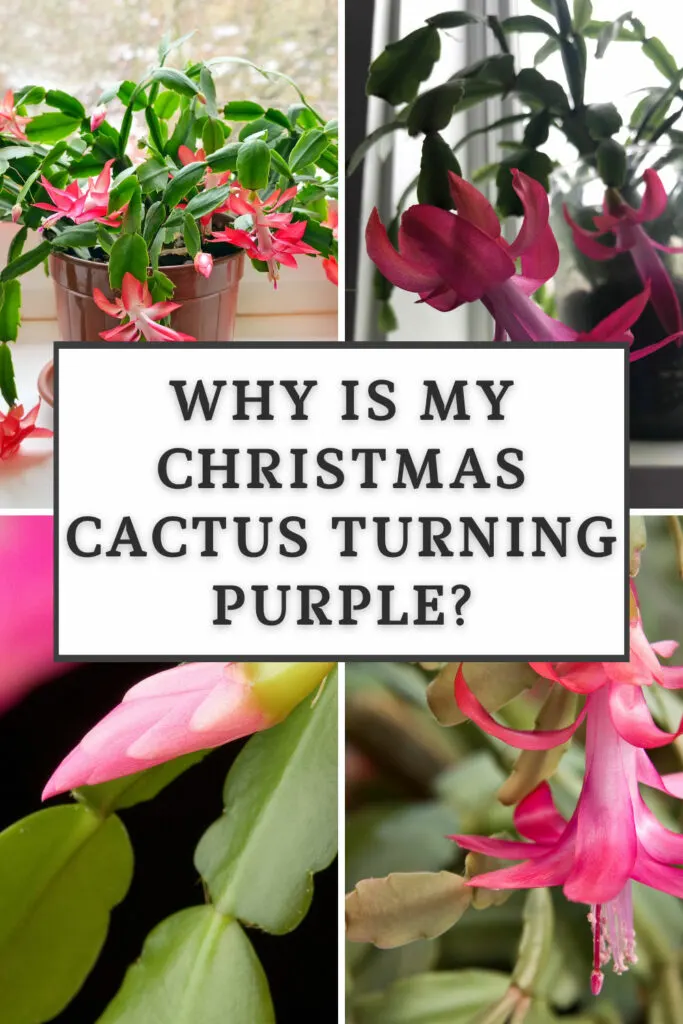
Keep reading to learn about the 6 most common reasons why you have a purple Christmas cactus.
Table of Contents
WHY IS MY CHRISTMAS CACTUS TURNING PURPLE?
According to Michigan State University, purpling of leaves is due to the presence of pigments called anthocyanins, and the amount of these pigments is influenced by a variety of factors.
These pigments serve to protect plants from excessive light, and can even improve stress tolerance.
Here are 6 potential causes of your Christmas cactus leaves (which are technically modified stems) turning purple.
1. TOO MUCH DIRECT SUNLIGHT
By far, one of the most common reason that your Christmas cactus is turning purple is due to too much sunlight. It’s not necessarily a bad thing, but your plant may be signaling to you to reduce the amount of light.
Christmas cacti are epiphytes in nature and grow on trees, so they typically will grow in “bright indirect light” or dappled/filtered sun in nature. Indoors, if you have them in a window that gets direct sun all day long, it is likely that you will have purple leaves.
If you have a generally healthy plant, if you reduce the light, you can have your plant turn green again, but you don’t want to reduce it too much otherwise it may not bloom.
A location right in front of an Eastern or Western-facing window would be great. Even windows that have no direct sun would work, but make sure it is immediately in front of it.
In the winter months, if you live in an area with short, dark days, it is hard to overdo light levels. You are more prone to see your holiday cactus turn purple in the summer months when light is more abundant.
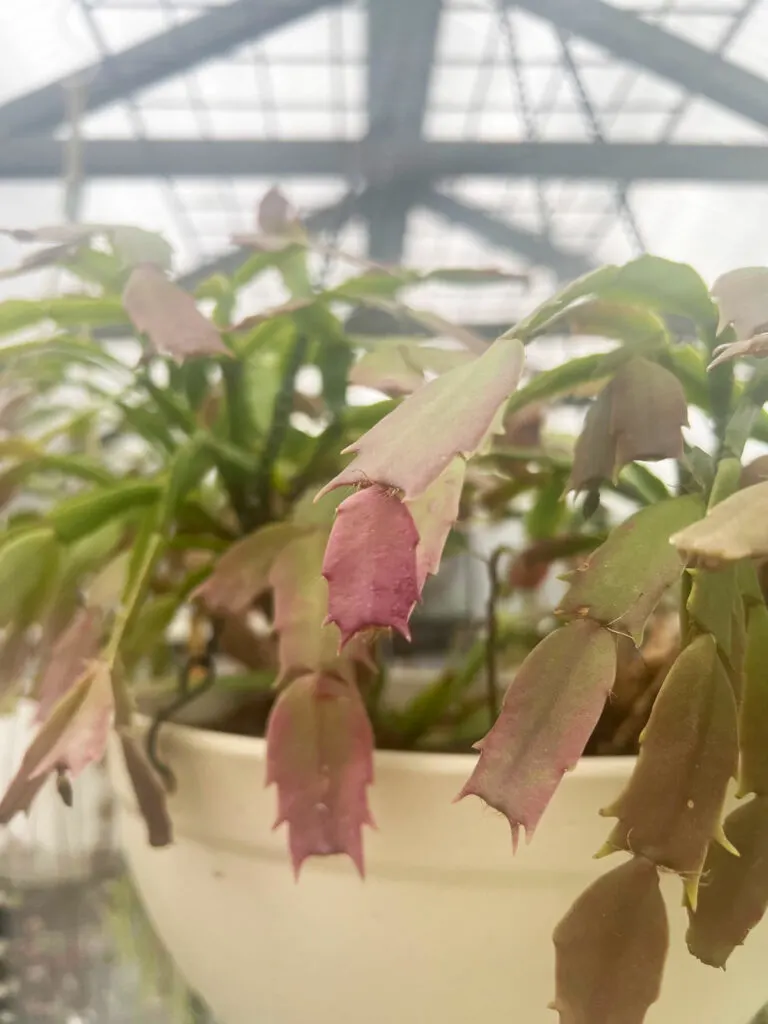
2. COLD TEMPERATURES
Cooler temperatures can increase anthocyanin concentration as well as limit phosphorus uptake, both of which cause purple leaves. If cool temperatures are combined with very high light as well, it can produce very purple plants!
Both Christmas cactus and Thanksgiving cactus belong to the Schlumbergera genus. The genus contains 7 species and they’re all native to Brazil and grow in the jungle.
As you can imagine, they don’t really like cold temperatures, so aim to have minimum temperatures no lower than about 55°F or so for best flowering and growth.
In fact, a drop in temperature at night can encourage your Christmas cactus to bloom.
High temperatures can actually decrease anthocyanin concentrations.
An ideal temperature range for growing Christmas cactus is approximately 60-85°F.
3. NUTRIENT DEFICIENCY
A lack of nutrients, particularly phosphorus, can cause purple leaves. Phosphorus deficiencies can result from a variety of things including:
- Not fertilizing at all. If you are regularly using a general-purpose indoor fertilizer, you are supplying all the necessary nutrients to your plant and you can usually safely eliminate this cause.
- Soil pH directly influences the availability of phosphorus to your plant. Even if you are fertilizing and supplying phosphorus, if the pH of your soil is too low (too acidic) or too high (too basic), it will become unavailable to your plant. Normally, pH issues aren’t terribly common with indoor plants, but it is a consideration. In general, soil pH levels of 6-7 or so work well for most plants.
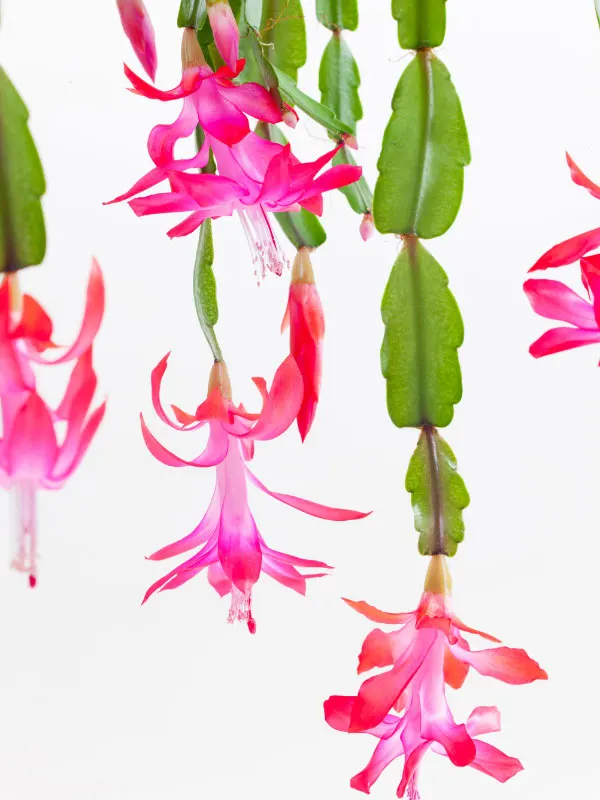
4. CROWDED ROOTS
If your Christmas cactus is severely root bound, it can become very difficult for your plant to uptake enough water due to the roots being so crowded.
And if your plant’s ability to uptake water is limited, it can also limit your plant’s uptake of phosphorus (even if you’re fertilizing).
Although your Christmas cactus plant doesn’t need large pots due to its smaller root systems, it will eventually outgrow its small pot and would benefit from repotting.
5. DRY CONDITIONS FROM IMPROPER WATERING
There is a general fear of “overwatering“. So many people are scared to water properly that they actually end up dehydrating their plants from lack of water by adding just a “little bit” of water.
Failing to water thoroughly will cause the root system to dry up and die.
Not moistening all of the soil properly will cause dry pockets of soil, and eventually, the roots in those areas will die. And if your root system is damaged enough, it may limit your plant’s uptake of phosphorus and become deficient and start to turn purple.
And please avoid using moisture meters as many of them are fault and will read “moist” when in fact your soil is bone dry!
6. SOIL THAT IS TOO WET
If you have soil that is excessively wet all the time for whatever reason (poor drainage in your soil mix, no drainage holes, or maybe you have an “overwatered” Christmas cactus), this can lead to root rot.
And if your plant has a damaged root system due to root rot, this will limit its uptake of water (ironically), and thus will also limit the update of phosphorus, causing purple coloration in your plant.
Even if you do have good drainage, always check any saucers at the bottom of the pot to make sure that your plant isn’t sitting in water. Always discard excess water. Although these plants live in the jungle, they are true cacti just like their desert cacti cousins, and they require good drainage.
Always make sure you provide your Christmas cactus with excellent drainage for their root health. Be sure not to miss my post on best soil for Christmas cactus. A good potting mix is very important in the health of these tropical plants.
I hope you’ve enjoyed this post on why Christmas cacti turn purple. Has your plant ever turned purple? Comment below. I’d love to hear!

